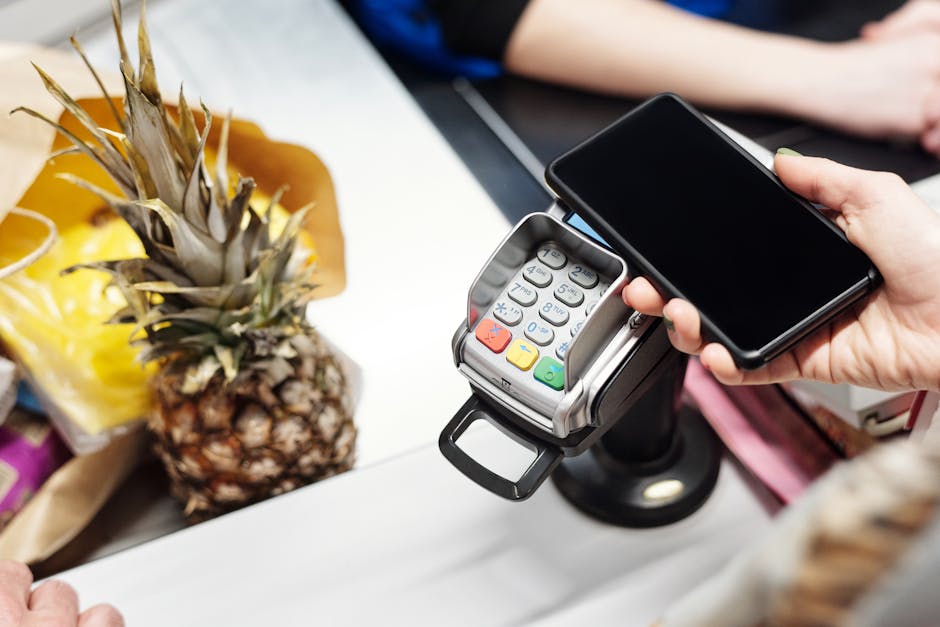Augmented Reality Hacks: Enrich Local Commerce & Customer Loyalty
In today’s fast-paced digital world, small businesses and startups face an ever-growing challenge: how to stand out in an over-saturated marketplace. One innovative solution gaining traction is the integration of augmented reality (AR) experiences into local commerce. This isn't just about flashy tech; it's about creating a meaningful connection with customers. Imagine stepping into a local store and experiencing the magic of your surroundings enhanced by AR—a digital overlay that breathes life into product displays, offers, and customer interactions. Understanding how to leverage AR can significantly enhance customer loyalty and boost sales for small businesses. Let's delve into this transformative approach and explore how AR can be a game-changer for local commerce.
The Need for Innovative Solutions in Local Commerce

Local businesses are at a crossroads, where competition from larger enterprises and online platforms poses serious threats. In a survey conducted by the National Retail Federation, over 70% of shoppers reported that they prefer personalized experiences when shopping. This signals an urgent need for local businesses to adopt innovative strategies that foster customer loyalty. By utilizing advanced technologies like AR, small businesses not only enhance the shopping experience but also build a community-oriented approach.
What is Augmented Reality?

At its core, augmented reality overlays digital content onto the real world through devices like smartphones or AR glasses. Unlike virtual reality, which removes users from their current environment, AR enhances everyday experiences by providing additional information or stimuli. For example, an AR application can allow customers in a local bookstore to scan a book cover with their phone, instantly pulling up reviews, author insights, or even multi-sensory experiences related to the book's content.
According to a report by Statista, the AR market is projected to reach $198 billion by 2025, underscoring the technology's growing relevance and potential impact on various sectors, including retail. Armed with this understanding, it's time for local businesses to explore how they can harness AR for their growth.
Enhancing Customer Engagement with AR

One of the most compelling reasons to integrate AR into your small business strategy is its ability to enhance customer engagement. Imagine a local brewery creating an AR experience around their beer selection. Customers could scan a beer label with their phones to access interactive content, such as the brewing process, food pairings, or even a behind-the-scenes look at the brewery. Such rich, interactive content can hook customers far more effectively than traditional marketing methods.
Additionally, AR can serve as a powerful storytelling tool—a method that resonates particularly well with younger audiences. Through immersive storytelling, businesses can forge a connection that feels personal and engaging, thus nurturing a sense of loyalty that can translate into repeat business.
Building a Sense of Place

AR can significantly contribute to establishing a "sense of place," making the physical store feel more than just a transaction venue. By creating experiences tied to the local environment and culture, small businesses can deepen connections with their community. For instance, a local art gallery could develop an AR app that highlights local artists, allowing visitors to interact with their works in innovative ways—turning an ordinary visit into a memorable experience.
Such experiences can increase customer foot traffic, encouraging community members to explore not only the gallery but also the surrounding shops and cafes. This interconnectedness plays a vital role in enhancing the overall customer experience and subsequently, business outcomes.
Practical Applications of AR in Local Commerce

-
Interactive Product Displays: Retailers can integrate AR into displays that allow customers to visualize products in their own homes. From furniture to paint colors, this technology makes it easier for customers to imagine how items will look in their own spaces.
-
Virtual Try-Ons: Cosmetic shops and clothing retailers are already harnessing AR through apps that enable virtual try-ons. Customers can see how different makeup looks or clothing styles fit without physically trying them on. This not only reduces in-store congestion but also enhances customer satisfaction.
-
Location-Based Promotions: Small businesses can implement location-based AR tools to send notifications or special offers to customers when they are near or inside the store. By providing timely and relevant content, businesses can drive immediate purchases.
-
AR Treasure Hunts: Creating an interactive scavenger hunt using AR can not only engage customers but also promote an exploration of the local area. Participants could earn rewards by finding various AR markers in different businesses, boosting foot traffic across the board.
-
Customized Experiences: An innovative use for AR is tailoring experiences based on the customer's previous visits or preferences. AR can suggest products based on past purchases, fostering a personalized shopping vibe that builds loyalty.
The Cost of Implementing AR for Small Businesses

While the benefits of AR are enticing, small businesses often hesitate due to perceived costs associated with technology. However, the reality is that several affordable AR solutions exist. Businesses can start small with off-the-shelf AR applications and gradually invest in customized solutions. According to the Harvard Business Review, the ROI for successfully implementing AR in retail can be significant, with some businesses reporting up to a 30% increase in customer engagement.
Additionally, resources such as 10 Proven Growth Hacks for Bootstrapped Startups provide insights into cost-effective strategies for integrating new technologies.
Collaborating with AR Professionals

For businesses looking to dive into AR but unsure where to start, collaborating with AR professionals can streamline the development process. By working with experts in the field, businesses can ensure their AR experiences are well-developed, user-friendly, and align with their target market. This investment pays off, as quality AR experiences will be more engaging and likely to convert onlookers into loyal customers.
The Role of Community in AR-Enhanced Loyalty

Building community ties is essential not only for fostering customer loyalty but also for creating a sustainable business ecosystem. AR encourages businesses to think locally and engage with the community in meaningful ways. Hosting local artist features or incorporating local storytelling into AR experiences can strengthen relationships with customers. Initiatives like these can turn casual shoppers into devoted fans.
Through customer interactions that highlight local culture and businesses, small enterprises can tap into the shared values and stories that matter to their community. The goal is to create a business that is not only a space for transactions but a hub of local identity—a place where customers feel seen and valued.
Challenges and Considerations

Despite the positives, businesses must be aware of potential challenges when adopting AR. For one, technical issues can arise, which may frustrate customers and deter them from using technology in the future. It is essential to ensure the AR experience is seamless and provides value for customers, reinforcing why they chose to engage in the first place.
Moreover, businesses should consider data privacy, as AR often requires app downloads and location tracking. Education around these aspects can help alleviate customer concerns while keeping the experience enjoyable and rewarding.
Final Thoughts
As we look toward the future of retail in 2025 and beyond, the incorporation of augmented reality into local commerce represents an exciting frontier for small businesses and startups. By intertwining technology with personalized customer engagement strategies, businesses can create unforgettable experiences that foster loyalty while celebrating community identity.
The beauty of AR lies in its potential to transform mundane shopping trips into moments of wonder and exploration. As local businesses strive to differentiate themselves in a competitive landscape, investing in AR might just be the growth hack they need. With creativity and thoughtful implementation, small enterprises can build a loyal customer base eager to engage and shop locally.
If you are inspired to explore more on creating unique experiences, check out driving local engagement through gamification or learn how to craft your compelling brand narrative to further boost your community presence.
Let's embrace the future of retail together—one augmented reality experience at a time!


